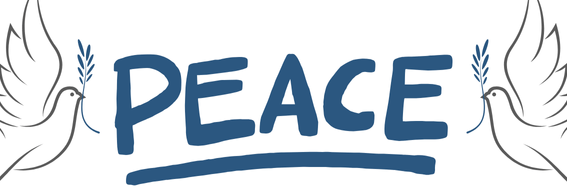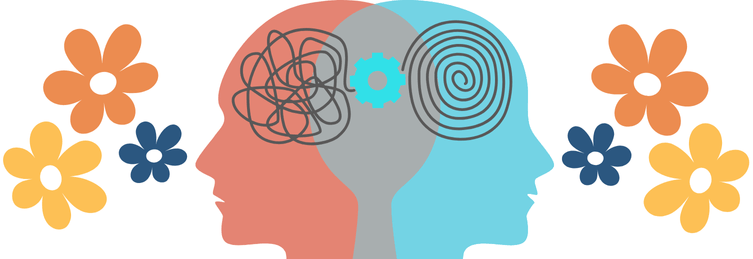Healthy Solitude vs Isolation Red Flags with Mental Health Boundaries Guide
Wondering if your alone time is healthy? Discover the distinction between healthy solitude and harmful isolation, along with actionable strategies to establish mental health boundaries. Discover how intentional alone time enhances creativity, self-reliance, and restoration.
ARTICLES
Samantha I'Anson
9/7/20259 min read


Key Takeaways
Solitude is a positive, intentional choice that encourages creativity and well-being, while loneliness is an unwanted emotional state associated with negative health outcomes
Healthy alone time provides space for deep thinking, self-reliance, restoration, and improved productivity
Warning signs of unhealthy isolation include avoiding social activities, anxiety about interactions, and persistent emptiness
In Your Comfort Zone provides resources to help you create intentional solitude practices that support mental health
The ability to enjoy solitude increases with age as we develop better emotional regulation and self-awareness
The Critical Difference Between Solitude and Loneliness
The distinction between being alone by choice and feeling lonely isn't just semantic—it's fundamental to your mental health. Solitude and loneliness may look identical from the outside, but they couldn't be more different on the inside.
While both experiences involve being alone, solitude is a positive state you consciously choose, creating space for yourself to think, create, and recharge. It's about feeling content, engaged, and self-sufficient in your own company. In contrast, loneliness is an unwanted emotional state marked by feelings of isolation and disconnection, even when physically surrounded by others. As the research confirms, this isn't just about preference—it's about emotional well-being.


The quality of your alone time largely depends on your relationship with yourself. At In Your Comfort Zone, we've observed that people who appreciate solitude often describe feeling peaceful, creative, and restored, while those experiencing loneliness report feeling empty, anxious, and cut off from others.
Understanding this distinction is the first step toward transforming isolation into meaningful solitude. When you recognize that being alone isn't inherently negative, you can begin to cultivate a healthy relationship with yourself and your time alone.
Why Healthy Alone Time Nourishes Mental Health
Healthy solitude isn't just pleasant—it's essential for psychological well-being. When you intentionally create space for yourself, you unlock several powerful benefits that support your mental health.
Space for Deep Thinking and Creativity
In a world of constant notifications and interruptions, deep thinking has become a luxury. Solitude creates the mental space needed for complex thought, problem-solving, and creative insights. Without the pressure to respond to others, your mind can wander freely, connecting ideas and possibilities that might otherwise remain undiscovered.
Research shows that many creative breakthroughs happen during periods of solitude when the mind can follow its natural curiosity without external distractions. This mental exploration fosters innovation and deeper understanding that rarely emerges in social settings.
Building Self-Reliance and Inner Strength
Regular periods of solitude build self-reliance as you learn to meet your own emotional and intellectual needs. This independence doesn't replace meaningful connections but complements them by ensuring you don't depend entirely on others for your sense of well-being.
Time alone helps you develop trust in your judgment and abilities. You become more comfortable making decisions independently and facing challenges without immediately seeking external validation or assistance.
Rest and Restoration from Social Demands
Social interaction, while valuable, requires energy. Even for extroverts, the constant need to respond appropriately, read social cues, and manage impressions can be exhausting. Solitude offers a break from these demands, allowing your social batteries to recharge.
During these quiet moments, you can drop the social masks we all wear to some degree and simply be yourself without judgment or expectation. This authentic rest is deeply restorative for your nervous system and emotional well-being.
Improved Focus and Productivity
Uninterrupted solitude creates the perfect conditions for focused work and productivity. Without conversations, messages, or meetings to fragment your attention, you can enter a flow state where time seems to disappear and work becomes effortless.
Many people find they accomplish more in a few hours of focused solitude than in days of fragmented, socially interrupted time. This concentration builds confidence in your abilities and satisfaction in your accomplishments.


Red Flags: When Alone Time Becomes Unhealthy Isolation
While solitude nourishes mental health, isolation can damage it. Recognizing the warning signs that your alone time has crossed into unhealthy territory is crucial for maintaining well-being.
1. Avoiding Previously Enjoyed Social Activities
One of the earliest signs of problematic isolation is regularly canceling plans or declining invitations to activities you once enjoyed. Pay attention if you feel relief rather than disappointment when plans fall through, or if you find yourself making excuses to avoid social gatherings that previously brought you joy.
Healthy solitude involves choosing alone time while maintaining social connections. When you begin systematically avoiding social interaction, it suggests your alone time may be driven by fear or avoidance rather than positive choice.
2. Anxiety and Dread About Social Interactions
Feeling persistent anxiety, fear, or dread at the prospect of social interaction is a significant red flag. While everyone occasionally feels nervous in social situations, chronic social anxiety that leads to avoidance indicates that isolation may be a coping mechanism rather than a healthy choice.
This anxiety often creates a vicious cycle: avoiding social situations provides temporary relief but ultimately increases anxiety about future interactions, leading to further isolation.
3. Emotional Numbness and Persistent Emptiness
Healthy solitude feels fulfilling and emotionally rich. In contrast, unhealthy isolation often creates a sense of emotional numbness, emptiness, or disconnection. You might feel like you're going through the motions of life without truly engaging or experiencing emotions.
This emptiness differs significantly from the peaceful contentment of healthy solitude and may indicate depression or other mental health concerns requiring attention.
4. Physical Symptoms of Chronic Stress
The body often signals when isolation has become harmful through physical symptoms of chronic stress. These might include persistent fatigue, disrupted sleep patterns, changes in appetite, headaches, or increased susceptibility to illness due to compromised immune function.
Research shows that chronic isolation actually triggers the body's stress response, increasing inflammation and risk for various health problems. These physical manifestations are important warning signs that shouldn't be ignored.
5. Neglecting Self-Care and Basic Needs
Healthy solitude typically includes good self-care, while unhealthy isolation often coincides with neglect of basic needs. Warning signs include declining personal hygiene, irregular meals, disordered sleep, increased substance use, or a disorganized living environment.
When alone time leads to self-neglect rather than self-nurturing, it suggests isolation may be a symptom of deteriorating mental health rather than a positive choice.


Creating Intentional Solitude Rituals
Intentional solitude differs from simply finding yourself alone. It involves deliberately creating rituals that transform ordinary alone time into meaningful solitude. These rituals signal to your brain that this time is special and purposeful, enhancing its restorative effects.
Effective solitude rituals might include a morning meditation practice, evening journaling, or weekend creative sessions. The key is consistency—regular practice helps your mind recognize and quickly settle into a state of peaceful solitude. Over time, these rituals become powerful anchors for emotional regulation and self-awareness.
By designating specific times and activities for solitude, you also make it easier to be fully present in your social interactions, knowing you have protected space for yourself elsewhere in your schedule.
Balancing Social Connection and Alone Time
Healthy solitude exists in balance with social connection. Neither complete isolation nor constant social engagement serves our mental health optimally. Research shows that both social routines and solitary rituals contribute uniquely to well-being.


A balanced approach might involve dedicated social time with friends and family, community engagement, and meaningful one-on-one connections, complemented by protected periods of solitude for reflection, creativity, and rest.
The ideal balance varies significantly between individuals and even changes throughout your life. Introverts typically require more solitude to feel their best, while extroverts may thrive with more social interaction. The key is honoring your authentic needs rather than conforming to external expectations.


Setting Healthy Mental Health Boundaries
Establishing clear boundaries around your alone time is essential for maintaining the delicate balance between healthy solitude and meaningful connection. These boundaries protect your mental well-being while ensuring you remain engaged with the world around you.
Age-Related Changes in Solitude Needs


Your relationship with solitude naturally evolves throughout your life. Research indicates that many people grow to enjoy and benefit from solitude more as they age. This shift stems from several factors, including increased autonomy, improved emotional regulation, and a deeper appreciation for self-reflection.
Older adults often report finding greater contentment in solitude than their younger counterparts. With age comes the freedom from many external demands and social expectations that previously limited alone time. Additionally, the emotional wisdom gained through life experience helps transform what might once have felt like loneliness into rich, satisfying solitude.
Recognizing these natural changes allows you to adapt your boundaries accordingly, accepting the evolving relationship between your social needs and solitude preferences as you move through different life stages.
Transformative Solo Practices to Cultivate Peace
Certain solitary practices have proven especially effective at transforming isolation into meaningful solitude. These activities help to nurture a sense of contentment, purpose, and connection—even when you're alone.


1. Mindfulness and Intentional Presence Exercises
Mindfulness meditation offers a powerful way to cultivate comfort with solitude. Even brief sessions of focused awareness on your breath, bodily sensations, or surrounding environment can anchor you in the present moment, reducing rumination and anxiety.
Start with just five minutes of mindful breathing each morning, gradually extending the duration as it becomes more comfortable. This practice develops your capacity to be present with yourself, a fundamental skill for transforming loneliness into peaceful solitude.
Mindful mornings—beginning your day with intentional presence rather than immediately reaching for your phone or diving into tasks—set a tone of self-awareness that can carry throughout your day.
2. Nature Immersion and Outdoor Reflection
Spending time alone in natural settings offers unique benefits for mental well-being. Research consistently shows that nature exposure reduces stress hormones, improves mood, and enhances creative thinking—all while providing a gentle context for solitude.
Solo nature walks, gardening, or simply sitting in a park create opportunities for both outward attention and inward reflection. The sensory richness of natural environments provides just enough external stimulation to prevent rumination while still allowing for deep thought.
Many find that walking meditation—combining mindful awareness with gentle movement in nature—offers an accessible entry point to meaningful solitude, particularly for those who find sitting meditation challenging.
3. Creative Expression Without Judgment
Creative activities provide ideal vehicles for self-discovery and expression during solitude. The key is approaching creativity without judgment or expectations of specific outcomes—focusing on the process rather than the product.
Try drawing, writing, music, cooking, or any form of creation that interests you. These activities engage your mind fully while allowing emotional expression, creating the conditions for flow—a state of complete absorption that represents one of the most satisfying forms of solitude.
Many find that creative expression helps externalize complex emotions, providing clarity and release that might be difficult to achieve through rational thinking alone.
4. Journaling for Emotional Processing
Writing about your thoughts, feelings, and experiences creates a powerful dialogue with yourself, fostering self-awareness and emotional clarity. Regular journaling has been linked to improved mood, reduced stress, and enhanced emotional regulation—all critical components of healthy solitude.
Try different journaling approaches: free writing without direction, guided prompts for self-discovery, gratitude lists, or reflection on daily experiences. The simple act of transferring thoughts from mind to page often reveals patterns and insights that remained hidden within the swirl of mental activity.
Consistent journaling practice also creates a record of your inner journey, allowing you to witness your growth and resilience over time.
5. Gratitude Practices for Contentment Alone
Gratitude practices counteract the negative thought patterns that can arise during solitude, redirecting attention toward appreciation and abundance rather than lack. Research shows that regular gratitude exercises significantly improve mood, life satisfaction, and overall well-being.
Consider incorporating brief gratitude pauses throughout your day—moments to acknowledge specific things you appreciate about your life, your surroundings, or even your own qualities and accomplishments. These pauses shift your emotional state and create a more positive relationship with your solitude.
Many find that ending the day with a gratitude review—mentally listing three specific things from the day to feel thankful for—improves sleep quality and creates a sense of completion and contentment before rest.
Solitude as a Path to Deeper Connection
Contrary to common perception, true solitude doesn't separate us from others—it prepares us for deeper, more authentic connection. By developing a healthy relationship with ourselves, we build the foundation for meaningful relationships with others.


The capacity for comfortable solitude indicates emotional maturity and self-awareness. When we no longer fear being alone, we make choices about our relationships based on genuine desire for connection rather than fear of loneliness. This shift transforms not only how we experience time alone, but also the quality of our interactions with others.
By implementing the practices and boundaries discussed in this guide, you can transform isolation into enriching solitude, creating space for self-discovery, creativity, and renewal that ultimately enhances every aspect of your life, including your connections with others.
In Your Comfort Zone offers resources and guidance to help you develop a healthy relationship with solitude for complete mental and emotional well-being.
